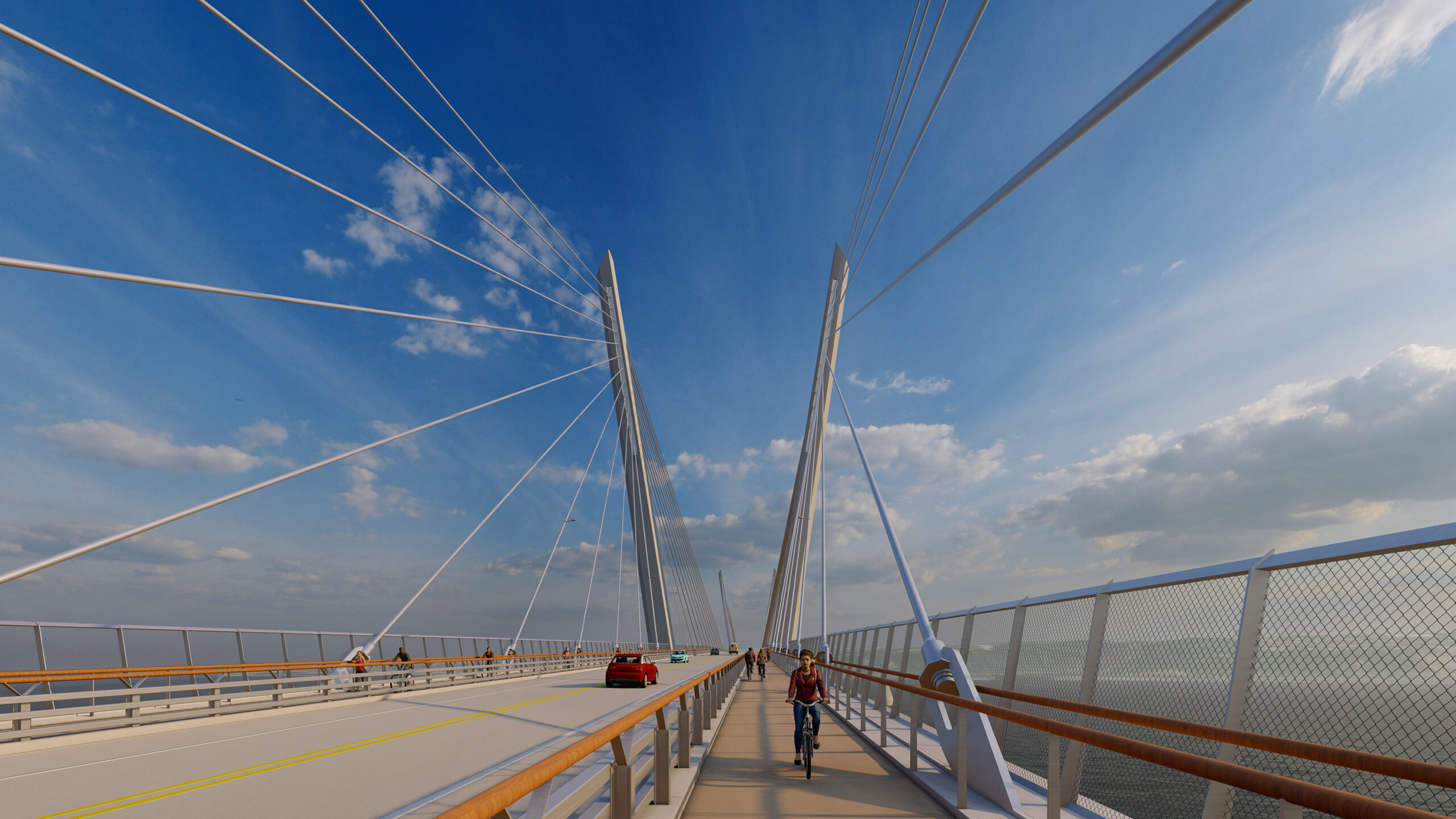Engineers play a central role in shaping the built environment. Through their work in design, construction, project management and beyond, they transform the way we experience the environment around us. They learn from the work of their predecessors, drawing inspiration to find innovative and sustainable solutions tailored to the world we live in and adapt to current and future environmental challenges. For nearly a century, our Bridges group has been forging vital links between communities by designing bridges – structures that will shape the landscape for decades. But what do our experts factor into designing a bridge with an estimated lifespan of around a century?
Pushing the technical boundaries
Located just off the north shore of the St. Lawrence River, near the city of Quebec, Île d’Orléans is a 193 km2 (120 m2) island that is home to close to 8,000 people and a major tourist destination in the summer. It is connected to the mainland by a single bridge built in 1935, that does not meet current requirements. To replace it, the Quebec Ministry of Transportation was looking for a structure that would be elegant, balanced and sleek, to showcase the region’s natural, cultural and historical landscape, and able to withstand the effects of climate change. After being selected by the Ministry to conduct the definitive pre-project study in October 2020, the Groupement Origine Orléans – a consortium made up of EXP, other renowned engineering firms and various world leaders in bridge design – accomplished an impressive feat of architecture and engineering by incorporating all those elements into the new Île-d’Orléans bridge’s design. “Together with all of the Groupement’s experts, we are pushing the limits of engineering to find the best possible solutions to build a durable bridge that is in harmony with its surroundings and offers an enhanced user experience,” says Sylvain Denis, director of the Quebec Bridges group.
Climate projections influence design
The longevity of a structure depends on multiple factors, including careful engineering design and the use of materials that are durable, low-maintenance and suited to weather conditions. To design this bridge, climate forecasts for the coming century were taken into account. Experts drew on past data to predict future trends and find solutions to current and future challenges brought on by climate change. “Projected changes to freeze-thaw cycles and the gradual scouring of marine soil are some of the factors that must be taken into consideration,” Sylvain explains. “Since changes to freeze-thaw cycles will result in rising water levels in this area and the expansion of the floodplain, the project will also involve raising the road leading to the bridge. The anticipated scour of the riverbed, at a depth of about 49 feet over the next 100 years, will also lead to changes to the conditions and loads to which the foundation and support elements of the bridge’s structure will be exposed. This meant they needed to be designed to preserve their integrity and weather these changes and the passage of time.”
The art of engineering is understanding, considering and combining thousands of project specifics while looking to the future. The design of the new Île-d’Orléans bridge is an inspiring example of the way engineers are able to build for tomorrow, today.
*Originally published in EXP’s Expresso: Shaping Tomorrow

